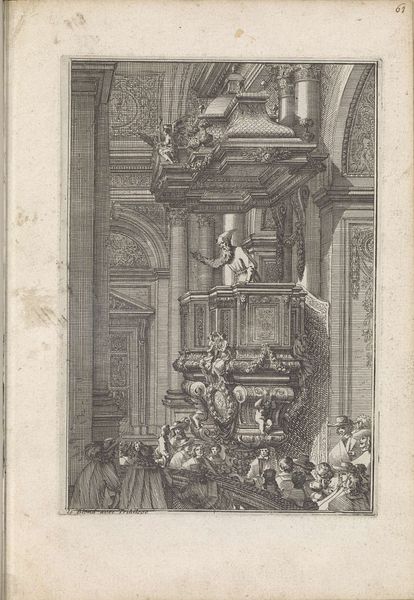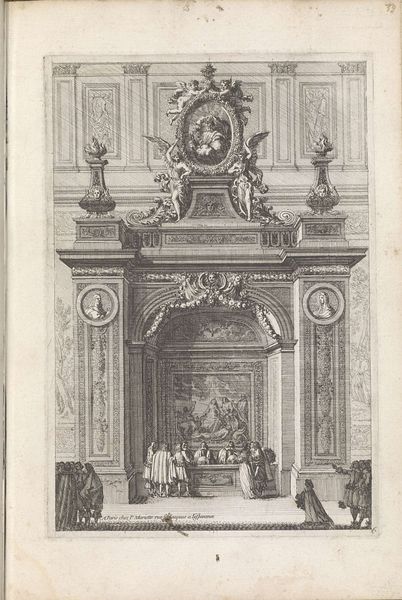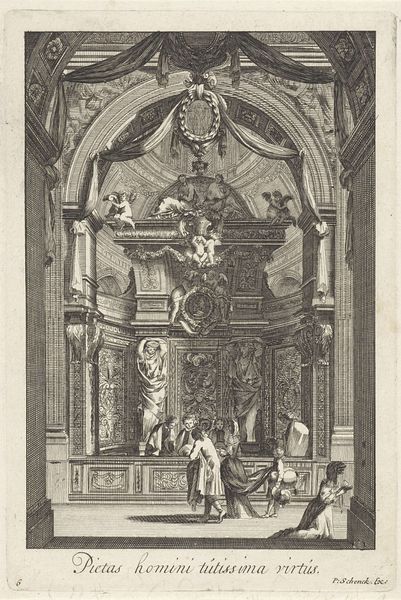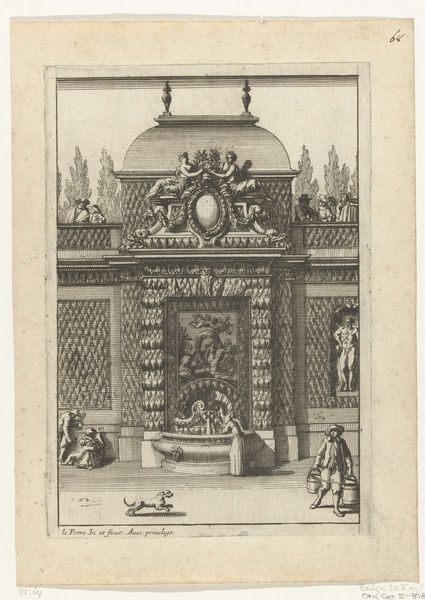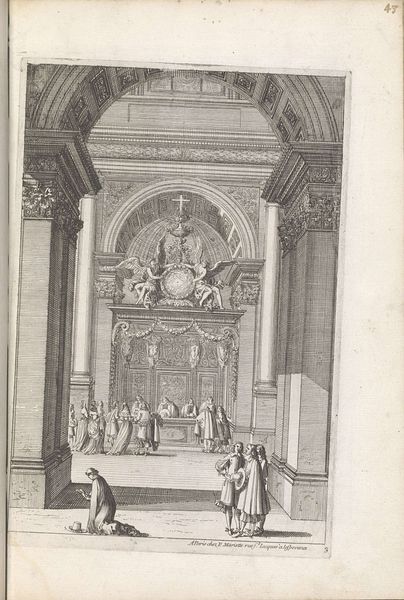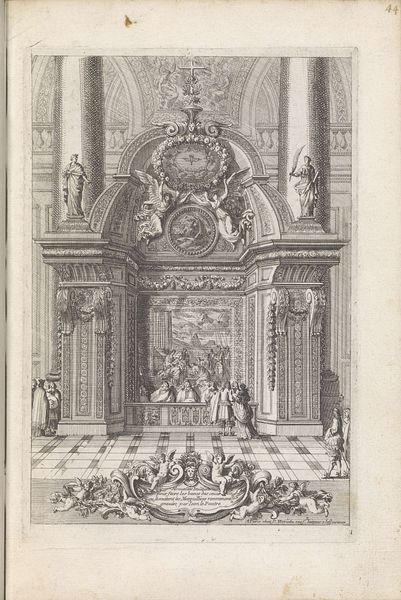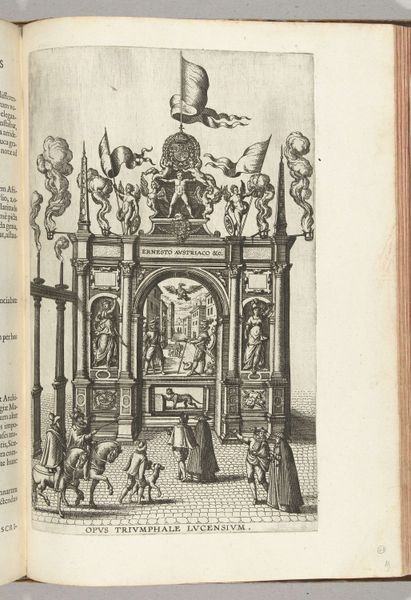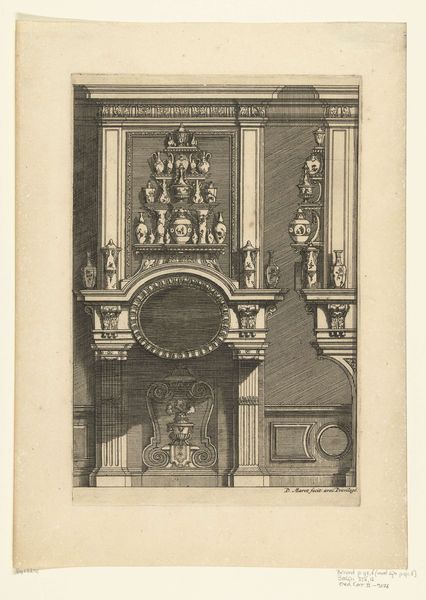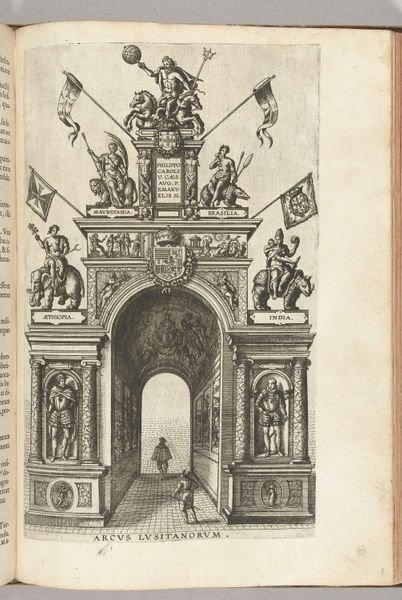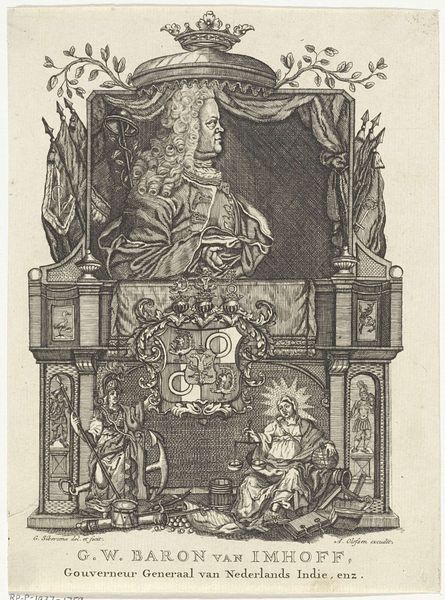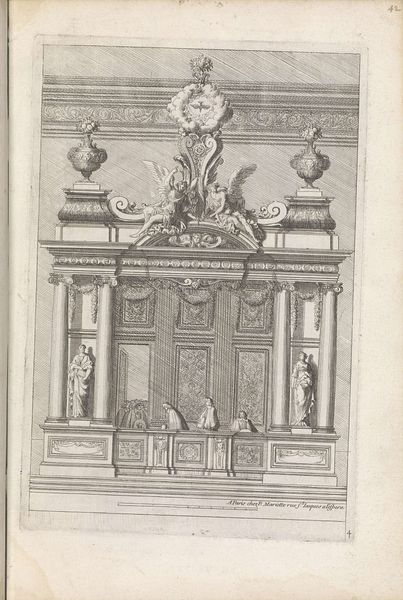
print, engraving, architecture
#
narrative-art
#
baroque
# print
#
figuration
#
form
#
line
#
history-painting
#
engraving
#
architecture
Dimensions: height 209 mm, width 145 mm
Copyright: Rijks Museum: Open Domain
Editor: So, here we have "Houtwerkdecoratie van kapel" or "Wooden Decoration of the Chapel", an engraving by Jean Lepautre from the mid-17th century. The scene is so intricate. It has a staged almost theatrical quality. How do you interpret this work? Curator: What I see is an articulation of power. Look closely at the figures within the chapel and consider their positioning. The architecture dominates, dwarfing them. How does the artist use architectural rendering to emphasize authority and potentially hierarchy within the religious and social structures of the time? Editor: It feels very performative, everyone is posing and their clothing seems very extravagant. Curator: Exactly. It’s critical to consider how representations of religious spaces in art, like this chapel, were often used to reinforce the dominance of certain ideologies. Can we analyze how elements like the ornate decoration and the idealized figures serve as visual tools in constructing narratives of authority and influence during the Baroque period? What effect might it have on those who viewed these chapels or engravings of them? Editor: I guess it showed you that the Church was wealthy and in charge. Curator: Indeed. And beyond mere wealth, think about the societal expectations it reinforces. How do visual narratives like this reinforce ideas about piety, gender roles, and social standing? Where would someone outside the group of figures be located, geographically but also socially? Editor: I never thought about the message architectural art sends to people and how controlled the narrative might be. Curator: Thinking about art like this print reminds us that what we see is carefully constructed. Questioning the structures of power at play within these spaces, both real and represented, allows us to engage in critical dialogues about art and society. Editor: It has changed my understanding of the purpose of art.
Comments
No comments
Be the first to comment and join the conversation on the ultimate creative platform.
